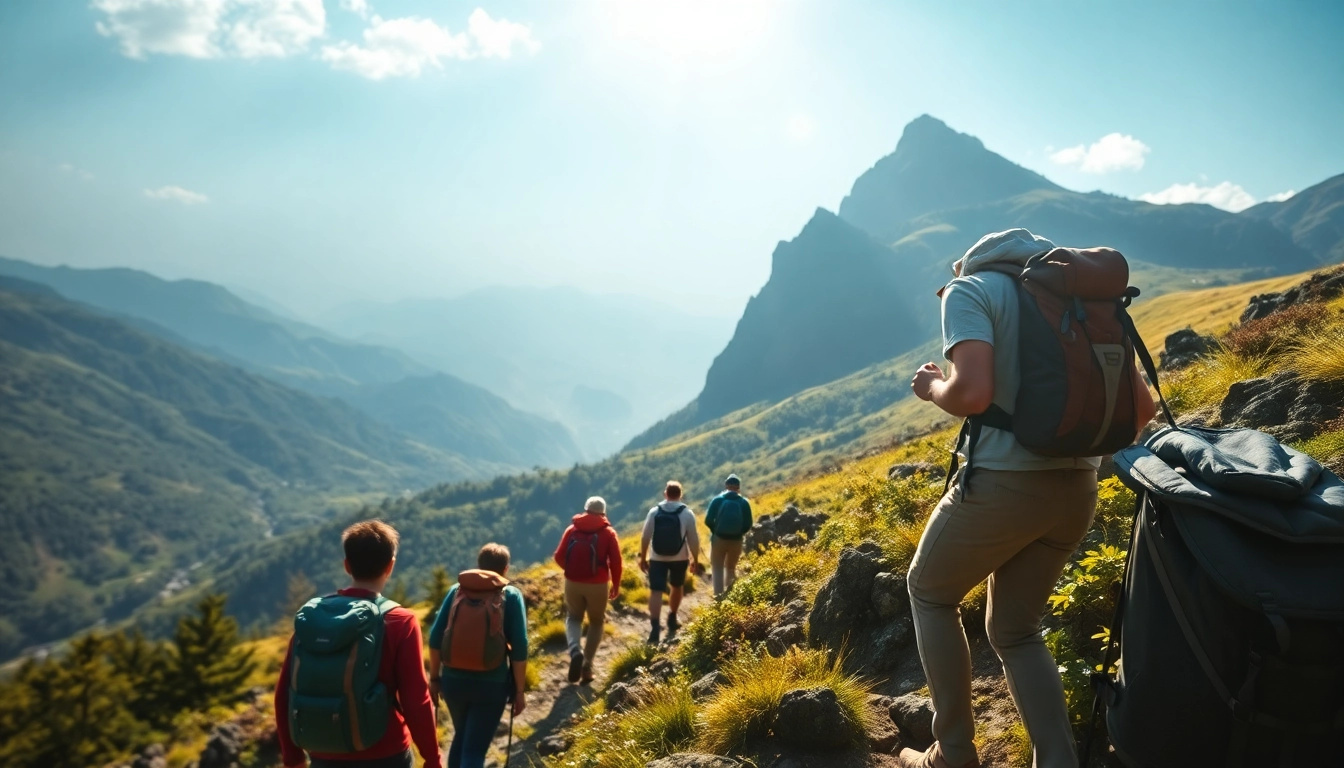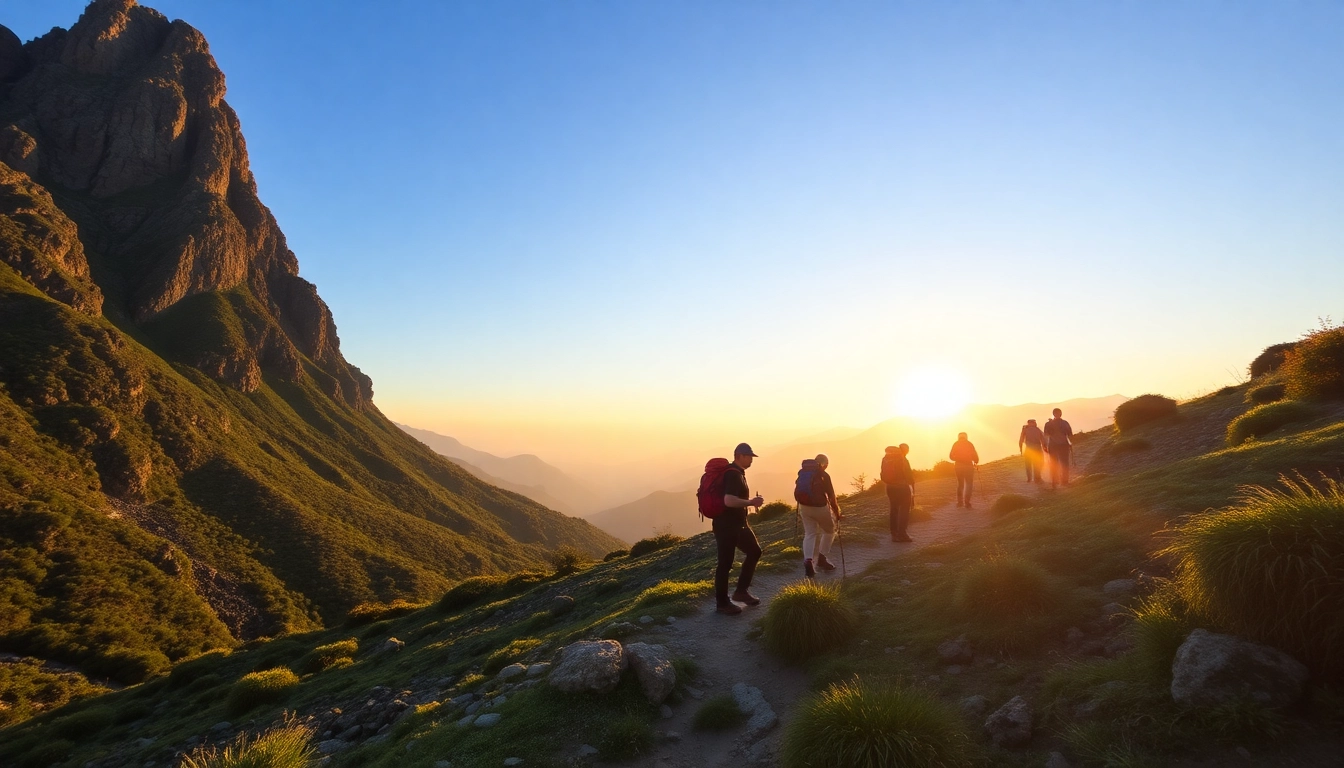Introduction to Guided Trekking in Indonesia
Embarking on a guided trek in Indonesia provides a unique opportunity to explore some of the most breathtaking natural landscapes in Southeast Asia. Whether you’re seeking the lush rainforests of Borneo, the volcanic terrains of Java, or the pristine beaches and islands of Lombok, a guided trek ensures a safe, insightful, and culturally enriching experience. Guided treks allow adventurers to navigate complex terrains with the expertise of seasoned guides, making the journey both accessible and memorable for travelers of all levels. For those interested in discovering the wonders of Lombok, Indonesia’s famous island, exploring the diverse trekking options with professional guidance can transform an ordinary vacation into an extraordinary adventure. To learn more about how to optimize your experience, visit guided trek in Lombok.
In this comprehensive guide, we delve into the fundamentals of guided trekking in Indonesia, emphasizing its significance, practical planning, and how to select the best tour providers. Whether you’re a beginner or an experienced trekker, understanding these insights will help you prepare and maximize each moment of your Indonesian adventure.
What is a Guided Trek and Why Choose It?
Defining a Guided Trek
A guided trek is a carefully organized journey undertaken on foot through natural and often challenging landscapes, led by an experienced guide. These guides are trained professionals familiar with the terrain, local culture, flora, fauna, and safety protocols. Their role is pivotal in enhancing the trekking experience by providing insightful commentary, navigational expertise, logistical support, and ensuring the safety of all participants.
Advantages of Opting for a Guided Trek
- Expert Navigation and Safety: Guides are adept at route finding, minimizing risks associated with difficult terrains, unpredictable weather conditions, and remote locations. Their knowledge about emergency protocols ensures prompt action if unforeseen incidents arise.
- Cultural and Environmental Insight: Guides serve as ambassadors, sharing local traditions, stories, and ecological information that enrich the trekking experience.
- Accessibility: Guided treks facilitate participation regardless of your experience level, as guides adapt routes and paces to suit groups.
- Logistical Convenience: Organizing accommodations, permits, meals, and transportation becomes significantly easier through established tour operators.
Overall, choosing a guided trek enhances safety, cultural understanding, and overall enjoyment, making it the preferred option for many explorers venturing into Indonesia’s wild terrains.
Historical and Cultural Significance of Trekking in Indonesia
Tradition and Local Heritage
Trekking in Indonesia is not solely about physical challenge; it’s a gateway into the rich tapestry of local traditions, histories, and spiritual practices. Many trekking routes pass through areas inhabited by indigenous communities, such as the Sasak people in Lombok, who have preserved unique customs and rituals for generations.
Historical Routes and Sacred Sites
Numerous trekking paths are intertwined with historical significance. For example, Mount Rinjani on Lombok, Indonesia’s second-highest volcano, holds cultural importance for local communities and is considered sacred. Trekkers often encounter ancient temples, traditional villages, and sites of spiritual relevance along their journey, adding layers of meaning beyond physical adventure.
Conservation and Ecological Awareness
Sustainable trekking practices have become vital in preserving Indonesia’s ecological wealth. Guided treks often include educational components about conservation efforts, endangered species, and environmental challenges facing the region.
Types of Guided Treks Available in Lombok
Volcano Trekking
Lombok’s majestic Mount Rinjani is a highlight for guided trekking tours, offering multi-day excursions to witness sunrise over the crater lake and volcanic landscapes. These treks range from moderate to challenging levels and often include camping at high altitudes.
Hiking Through Cultural Villages
Cultural trekking routes encompass visits to traditional Sasak villages, where travelers can experience local crafts, cuisine, and rituals firsthand. These routes are suitable for those interested in cultural immersion with manageable hiking distances.
Coastal and Island Treks
Explore Lombok’s stunning coastlines and secluded islands via guided hikes and boat transfers, including trips to Gili Islands or remote beaches, combining land and sea adventures for a diverse trekking experience.
Rainforest and Jungle Expeditions
Venture into Lombok’s verdant rainforests, discovering endemic plant and animal species, waterfall crossings, and canopy walks guided by local experts.
Planning Your Perfect Guided Trek Experience
Selecting the Right Trek for Your Skill Level
Understanding your physical fitness and trekking experience is paramount when choosing an Indonesian guided trek. Beginners should opt for shorter, lower-altitude routes with gentle terrain, such as village walks or coastal trails. More experienced hikers can undertake multi-day volcano treks or jungle expeditions. Many reputable providers offer detailed information about difficulty levels, duration, and required fitness, enabling informed decisions.
Preparing Equipment and Gear for Your Trek
Proper preparation begins with selecting appropriate gear. Essential items include sturdy hiking boots, weather-appropriate clothing, a lightweight backpack, hydration systems, and basic first aid supplies. For high-altitude treks like Rinjani, specialized gear such as headlamps, warm layers, and trekking poles are recommended. Local guides often provide a gear checklist, but personal preparation ensures safety and comfort.
Understanding Safety Measures and Emergency Protocols
Safety during guided treks depends heavily on adhering to protocols shared by your guides. These include keeping within designated routes, staying hydrated, listening to briefings, and understanding emergency evacuation procedures. Always communicate any health concerns beforehand and carry necessary medications. Reputable guide services maintain first aid kits and contingency plans for adverse weather, accidents, or other emergencies.
Best Practices for a Successful Guided Trek
Respecting Local Culture and Environment
Responsible trekking involves respecting local customs, traditions, and environmental regulations. Be mindful of cultural sensitivities—ask permission before photographing locals, avoid disruptive behavior, and support local economies by purchasing crafts or services. Additionally, follow Leave No Trace principles—dispose of waste properly, avoid damaging flora, and refrain from disturbing wildlife.
Maintaining Physical Fitness and Endurance
Regular cardiovascular and strength training can prepare your body for the physical demands of trekking. Incorporate walking, hiking with weight, and flexibility exercises into your routine. Adequate rest, hydration, and nutrition before and during the trek will also enhance endurance.
Engaging Fully with the Guided Experience
Maximize your adventure by actively participating in all activities, asking questions, and embracing local customs. Keep a journal, take photographs responsibly, and stay mentally engaged with the natural surroundings and cultural interactions.
Choosing a Tour Provider in Indonesia
How to Select a Reliable Guided Trek Service
Selecting a trustworthy provider ensures safety, quality, and a memorable experience. Look for operators with established reputations, proper licensing, certified guides, and positive reviews. Verified memberships with professional associations, adherence to safety standards, and transparent itineraries are indicators of reliability. Comparing package inclusions, prices, and group sizes can assist in decision-making.
What to Expect from Professional Guides
Skilled guides offer not only navigational expertise but also cultural insights, safety management, and personalized attention. They facilitate an engaging experience, often sharing local stories, ecology, and history. Their ability to adapt to unforeseen circumstances and communicate effectively greatly enhances the trek’s success.
Reviews and Testimonials of Top Trekking Companies
Investigate customer feedback on platforms like TripAdvisor, Google Reviews, or trekking forums. Top companies often showcase testimonials praising their guides’ professionalism, the quality of equipment, safety measures, and cultural engagement. References and detailed itineraries further confirm their credibility.
Enhancing Your Trekking Adventure
Incorporating Photography and Memory-Making Tips
Capture the essence of your adventure by using a good quality camera or smartphone with protective gear. Golden hours—early morning and late afternoon—offer optimal lighting. Respect local sensitivities when photographing people, and always ask permission. Keep a travel journal or create a photo album to preserve memories.
Post-Trek Care and Reflection
After completing your trek, prioritize rest, hydration, and proper nutrition. Reflect on your experiences by sharing stories with fellow travelers and local guides. Engage in eco-friendly practices by supporting conservation initiatives or volunteering for local environmental programs.
Next Steps: Advanced Trekking Challenges in Indonesia
For seasoned trekkers, Indonesia offers ambitious routes such as multi-day jungle expeditions, remote mountain summits, or water-based treks. Consider specialized training, gear upgrades, and expert-guided programs to take your adventure to new heights, always respecting local guidelines and safety protocols.

